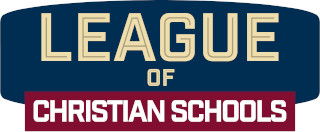PEC TRAINING INFORMATION
Below are some of the most frequently asked questions (FAQs) of the PEC Program.
What is PEC?
Professional Education Competency Program for School / Center Administrators and Teachers replaces the former Professional Orientation Program (POP) for FLOCS.
Who does this affect?
All schools with teachers who are entering the application process for a Florida Educator’s Certificate.
What happened to the POP program?
The Professional Orientation Program has been replaced by the State Department of Education. Each district is required to develop a program for teachers meeting the competency and teacher’s professional certification.
What are the PEC Guidelines?
-
- Teachers, who are seeking certification and need to demonstrate the competencies, will submit a CG-10 Application for Florida Educators Certificate in order to obtain a temporary certificate. This will allow them to obtain a Letter of Eligibility which will be their plan of operation in order to obtain the Professional Certificate. It will be the responsibility of the Florida Department of Education (FDOE) to review the transcript of credits.
- A teacher (1) who has graduated from a teacher preparation program in the State of Florida; (2) who has graduated from a teacher preparation program and taught for two years under a certificate from that State; (3) who has applied for Fast Track Consideration; are exempt from this Demonstration of Competencies.
- Teachers, who are seeking certification and need to demonstrate the competencies, will submit their fingerprints so that they can be reviewed by the proper national and state law enforcement agencies. After the fingerprint card and check have been obtained from the teacher/administrator, the administrator submits this documentation with the Request to the Bureau of Teacher Certification for issuance of an Initial Certificate (For State Supported or Nonpublic Schools).
- Since the Florida Performance Measurement System (FPMS) and the Formative and Summative Observation Instrument (SSOI) are part of the criteria for demonstration, the administrator at the local school/center needs to have at least one staff member or preferably two, qualified as a trained SSOI observer and updated in accordance with the schedules from the FDOE.
- Professionals who serve as Supervising Teachers/Administrators must have completed the Clinical Educators Training certifying them to work in the PEC program. The Clinical Educators Training provides information in the six Domains which are part of the criteria for the demonstration of the Professional Education Competency Demonstration.
- When the competencies have been demonstrated, request the Verification of the Demonstration of Professional Education Competence Form: CT-118. This form must be signed by the FLOCS Master Inservice Program Officer.
Where do I send the applications, fingerprint cards, and check?
The Department of Education requires that all application packets be sent to the Master Inservice Office. After the information is reviewed, the entire application will be sent to Tallahassee. Our office will also serve as liaison with the Florida Department of Education for any Developing Teacher.
What are the 17 PEC Competencies?
-
- Ability to write in a logical and understandable style with appropriate grammar and sentence structure.
- The ability to read, comprehend, and interpret professional and other written material.
- The ability to comprehend and work with fundamental mathematical concepts.
- The ability to recognize signs of severe emotional distress in students and to apply techniques of crisis intervention with an emphasis on suicide prevention and positive emotional development.
- The ability to recognize signs of alcohol and drug abuse in students and to apply counseling techniques with emphasis on intervention and prevention of future abuse.
- The ability to recognize the physical and behavioral indicators of child abuse and neglect, to know rights and responsibilities regarding reporting, to know how to care for a child’s needs after a report is made, and to know recognition, intervention, and prevention strategies pertaining to child abuse and neglect which can be related to children in a classroom setting in a nonthreatening, positive manner.
- The ability to comprehend patterns of physical, social, and academic development in students, including exceptional students in the regular classroom, and to counsel these same students concerning their need to these areas.
- The ability to recognize and be aware of the instructional needs of exceptional students.
- The ability to comprehend patterns of normal development in students and employ appropriate intervention strategies for disorders of development.
- The ability to identify and comprehend the codes and standards of professional ethics, performance and practices as adopted pursuant to s.231.546 (2)(b), the grounds for disciplinary action provided by s.231.28, and the procedures for resolving complaints filed pursuant to this chapter, including appeal process.
- The ability to recognize and demonstrate awareness of the educational needs of students who have limited proficiency in English and employ appropriate teaching strategies.
- The ability to use appropriate technology in teaching and learning processes.
- The ability to use assessment strategies to assist the continuous development of the learner.
- The ability to use teaching and learning strategies that include considering each student’s culture, learning styles, special needs, and socioeconomic background.
- The ability to demonstrate knowledge and understanding of the subject matter that is aligned with the subject knowledge and skills specified in the student performance standards approved by the state board.
- Formulates a standard for student behavior in the classroom.
- Deals with misconduct, interruptions, intrusions, and digressions in ways that promote instructional momentum.


